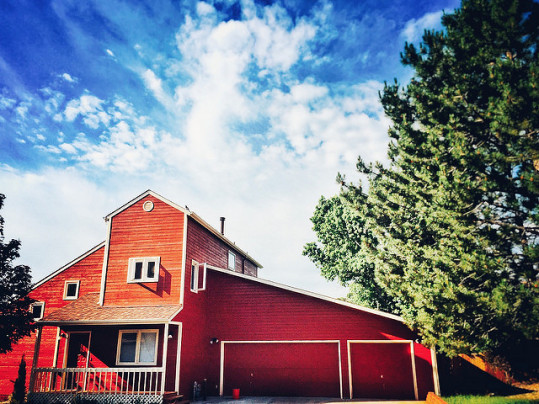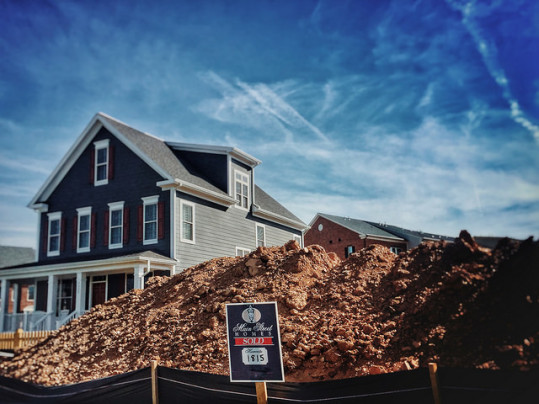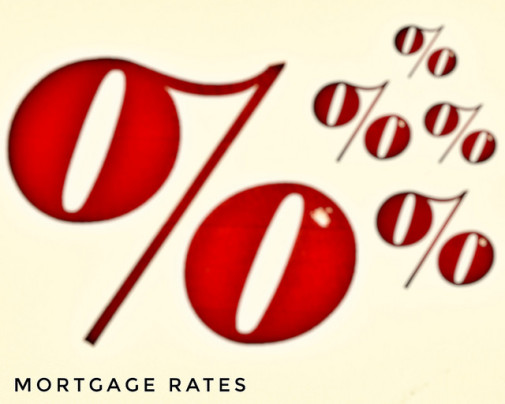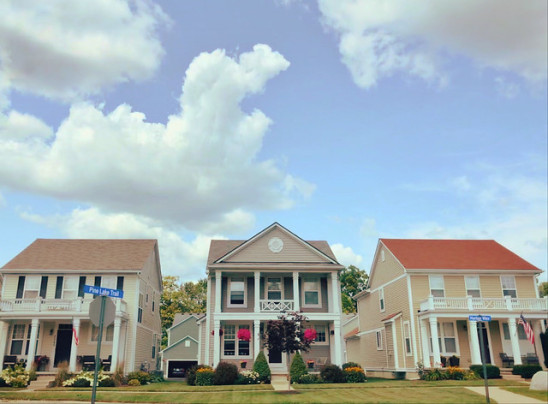According to the Mortgage Bankers Association’s Weekly Applications Survey, demand for loans to buy homes is now 27 percent higher than at the same time last year. The improvement – which comes following a 1 percent week-over-week increase – marks three consecutive months of gains over last year’s numbers. Joel Kan, MBA’s associate vice president of economic and industry forecasting, says the housing market’s quick rebound has been a bright spot in the economy. “The housing market remains a bright spot in the current economic recovery and these results, combined with July data on housing starts and home builder optimism, suggest that housing supply could be increasing to better meet the strong demand for buying a home,” Kan said. Also in the report, average mortgage rates were up from the previous week, with increases for 30-year fixed-rate loans with conforming and jumbo balances and 15-year fixed-rate loans. Rates for loans backed by the Federal Housing Administration were down from one week earlier. The MBA’s weekly survey has been conducted since 1990 and covers 75 percent of all retail residential mortgage applications. (source)
Archive for August 2020
Are Home Prices Rising Faster In Rural Areas?
In the spring, when the coronavirus had just begun to spread, there were some indication that prospective home buyers were already adjusting their plans. Buyer surveys and online search data showed there were a significant number of home shoppers who – driven primarily by the availability of remote work – decided to expand their search and look at homes in suburban and rural areas, further from the city. For example, one analysis found that the percentage of prospective buyers who said they planned to search for a home in a rural area increased from 9 percent to 19 percent following the onset of the pandemic. But what, if anything, has the interest in smaller, less populated locations done to home prices in those areas? Well, recent data shows it may have caused prices to rise more quickly. In fact, homes in rural areas saw their median sales price increase 11.3 percent year-over-year through the week ending August 2. For comparison, suburban homes were up 9.2 percent and urban areas saw a 6.7 percent annual increase. (source)
Builder Confidence Rebounds To All-Time High
The National Association of Home Builders’ Housing Market Index measures builder confidence in the market for newly built single-family homes. The survey, which has been conducted for the past 35 years, scores builders’ responses on a scale where any number above 50 indicates more builders view conditions as good than poor. In August, the index reached a score of 78, which matches its all-time high set in 1998. Robert Dietz, NAHB’s chief economist, says the housing market’s rebound has been a bright spot during the pandemic. “Housing has clearly been a bright spot during the pandemic and the sharp rebound in builder confidence over the summer has led NAHB to upgrade its forecast for single-family starts, which are now projected to show only a slight decline for 2020,” Dietz said. “Single-family construction is benefiting from low interest rates and a noticeable suburban shift in housing demand to suburbs, exurbs, and rural markets as renters and buyers seek out more affordable, lower density markets.” Among its components, the gauge of current buyer traffic showed the biggest month-over-month improvement, rising eight points to 65 – its highest level ever. (source)
Majority Of Recently Sold Homes Were Affordable
If you’re considering buying a home, you’ve likely already thought about whether or not you can afford it. After all, buying a home is a major financial transaction, so there are few considerations more important than affordability. That’s why the National Association of Home Builders latest Housing Opportunity Index is good news for potential buyers. The report – which measures how affordable homes are for families earning the national median income – found that 59.6 percent of new and existing home sold between April and June were affordable. But while that’s positive news, affordability did fall from the first quarter, with the number of affordable homes down due to rising home prices. “Home prices appreciated robustly during the second quarter due to better-than-expected housing demand in the wake of the pandemic and because the coronavirus hindered the ability of builders to ramp up production,” Robert Dietz, NAHB’s chief economist, said. In fact, increasing prices let to a 1.7 percent drop in the number of affordable homes. During the first quarter, 61.3 percent of sold homes were considered affordable. (source)
New Listings Grow Past Pre-Pandemic Pace
When the coronavirus pandemic began in mid-March, there were understandable concerns about how it would affect the housing market. But fortunately, though activity did fall, it rebounded just as quickly. Home buyers who delayed their plans adapted to new safety regulations and resumed their home search. But while buyers were quick to get back into the market, home sellers didn’t rebound quite as fast. The number of newly listed homes for sale lagged and it resulted in more competition among buyers, upward pressure on prices, and an increase in bidding wars. But according to the most recent Weekly Recovery Report from the National Association of Realtors’ consumer website, things may finally be turning around. In fact, the report, which covers numbers through the week ending August 8, found new listings grew passed their pre-pandemic baseline for the first time since the coronavirus’ onset. Javier Vivas, director of economic research for the site, says seller confidence has reached an important milestone. “Seller confidence has been improving gradually after reaching its bottom in mid-April, and now it appears to have reached an important recovery milestone,” Vivas said. “After five long months, sellers are back in the housing market.” (source)
Mortgage Rate Drop Stirs Up Loan Demand
According to the Mortgage Bankers Association’s Weekly Applications Survey, average mortgage rates fell last week, dropping to new survey lows. Rates were down across all loan categories, including 30-year fixed-rate loans with conforming loan balances, jumbo loans, loans backed by the Federal Housing Administration, and 15-year fixed-rate loans. Joel Kan, MBA’s associate vice president of economic and industry forecasting, said favorable rates helped push demand for mortgage applications higher. “Refi activity responded to these lower rates, with the refi share reaching almost 66 percent of all applications, its highest level since May,” Kan said. “Home purchase activity continued its strong run with a 2 percent increase over the week and was up around 22 percent compared to the same week a year ago.” However, though low rates and rising demand are positive signs for the market, challenges remain. Among them, low housing inventory, the coronavirus’ spread, and the job market are lingering concerns that will continue in the week ahead. The MBA’s weekly survey has been conducted since 1990 and covers 75 percent of all retail residential mortgage applications. (source)
Home Buyer Interest Moves To The Suburbs
The National Association of Realtors’ consumer website recently released the results of their quarterly Cross Market Demand Report, which looks at the homes and neighborhoods prospective buyers are searching online. According to the results, the coronavirus continues to influence home buyers’ needs and preferences. For example, 51 percent of views from residents of the country’s 100 biggest cities went to properties in the surrounding suburbs. That’s an all-time high and further evidence that the pandemic has caused a shift in what buyers are looking for in a house and neighborhood. Danielle Hale, the site’s chief economist, says home shoppers are increasingly interested in smaller towns, further from work. “We see lingering effects of the coronavirus on shopping behavior and preferences,” Hale said. “However, those looking elsewhere are much more likely to be looking in smaller, nearby markets. With remote work more common and accepted, it seems that people are looking to locate further from the office either to enjoy more space at a better price, or get closer to nature in the mountains or at the beach. At this point, they are not venturing too far away.” (source)







